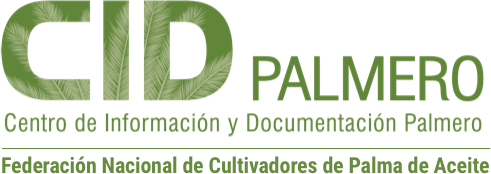Validation of Criteria for Bunch Cutting in the Brasil x Djongo Cultivar During the Harvesting Process in a Plantation in the Southwestern Zone

Disponible aquí
Disponible aquí
Disponible aquí
Disponible aquí
Disponible aquí
Disponible aquí
Disponible aquí
Disponible aquí
Disponible aquí
Disponible aquí
Disponible aquí
Disponible aquí
Disponible aquí
Disponible aquí
Disponible aquí
Disponible aquí
Disponible aquí
Disponible aquí
Disponible aquí
Disponible aquí
Disponible aquí
Disponible aquí
Author
Sinisterra-Ortiz, Kelly
Vargas-Medina, Liseth Estefanía
Cortés-López, Paulo
Angulo-Ampudia, Mauricio
Cortés-Barreto, Ingrid
Camperos-Reyes, Jonathan Eduardo
Mosquera-Montoya, Mauricio
Estadisticas
Publicación:
Palmas; Vol. 45 Núm. 2 (2024): Palmas; 8-19
2744-8266
Palmas; Vol. 45 Núm. 2 (2024): Palmas; 8-19
2744-8266
Abstract
Given the gap between the actual yield and the potential yield of OxG hybrid oil palm crops, measured in terms of oil production per hectare, strategies have been considered to increase the oil extraction rate (OER). Among the alternatives is the study of the criteria for cutting fresh fruit bunches (FFB) at the time of harvest. This study is due to the fact that initially the harvest of FFB in OxG hybrid palm crops followed the criteria used for the harvest of E. guineensis cultivars. In this sense, Cenipalma developed a research project that allowed it to identify the criteria that the FFB cutter must use to maximize the oil potential of the FFB. The set of these criteria is known as the optimal harvest point (OHP) for hybrid cultivars and these vary according to the OxG crossing. The results indicate that harvesting at OHP has a signifi-cant impact on the OER. The objective of this work was to implement the OHP for the OxG hybrid cultivar Brasil x Djongo on a commercial scale in a plantation in Colombia. For this, the quality of the harvest in the study plantation was first diagnosed. Subsequently, the plan-tation's criteria were modified using the OHP criteria and the results of the initial diagnosis. Finally, the OHP criterion was implemented during two harvest cycles of the same batch. The OER was evaluated in the oil plant mill in the three scenarios. The results showed that after implementing the OHP, more than 80% of the FFB were harvested at the optimal maturity stage (before implementing the OHP it was 47 %), which implied an increase in the OER from 23.62 % to 24.97 % and 25.03 % during the evaluated harvest cycles, respectively. This transla-tes into an increase in business income of $ 1,161,504 and $ 1,213,127 per hectare per year in each of the evaluated harvest cycles, that is, 5.72 % and 5.97 %, respectively. The above allows us to demonstrate that the implementation of the OHP corresponds to a key strategy for the sustainable intensification of the oil palm business. A partir de la brecha entre el rendimiento actual y el rendimiento potencial de los cultivos híbridos OxG de palma de aceite, medidos en términos de producción de aceite por hectárea, se ha pensado en estrategias para incrementar la tasa de extracción de aceite (TEA). Entre las alternativas se encuentra la de estudiar los criterios de corte de racimos de fruta fresca (RFF) en el momento de la cosecha. Este estudio obedece a que la cosecha de RFF en cultivos de palmas híbridas OxG en un comienzo siguió los criterios empleados para la cosecha de los cultivares E. guineensis. En este orden de ideas, Cenipalma desarrolló un proyecto de investigación que le permitió identificar los criterios que el cortador de RFF debe tener en cuenta para maximizar el potencial de aceite de los frutos. El conjunto de dichos criterios se conoce como el punto óptimo de cosecha (POC) para los cultivares híbridos y estos varían de acuerdo con el cruzamiento OxG. Los resultados indican que cosechar en el POC tiene un impacto importante en la TEA. El objetivo de este trabajo fue implementar el POC para el cultivar híbrido OxG Brasil x Djongo a escala comercial en una plantación de Colombia. Para esto, primero se realizó el diagnóstico de la calidad de la cosecha en la plantación de estudio. Posteriormente, se modificó el criterio de la plantación para lo cual se emplearon los criterios de POC y los resultados del diagnóstico inicial. Finalmente, se implemento el criterio de POC durante dos ciclos de cosecha del mismo lote. En los tres escenarios se evaluó la TEA en la planta de beneficio. Los resultados arrojaron que, después de implementar el POC, más del 80 % de racimos se cosecharon en estado óptimo de madurez (antes de implementar el POC fue de 47 %), lo que implicó un incremento en la TEA al pasar de 23,62 % a 24,97 % y 25,03 % durante los ciclos de cosecha evaluados, respectivamente. Esto se traduce en un incremento del ingreso del negocio de $ 1.161.504 y $ 1.213.127 /ha/año en cada uno de los ciclos de cosecha evaluados; es decir, el aumento fue del 5,72 % y 5,97 %, respectivamente. Lo anterior permite evidenciar que la implementación del POC corresponde a una estrategia clave para la intensificación sostenible del negocio de la palma de aceite.
Given the gap between the actual yield and the potential yield of OxG hybrid oil palm crops, measured in terms of oil production per hectare, strategies have been considered to increase the oil extraction rate (OER). Among the alternatives is the study of the criteria for cutting fresh fruit bunches (FFB) at the time of harvest. This study is due to the fact that initially the harvest of FFB in OxG hybrid palm crops followed the criteria used for the harvest of E. guineensis cultivars. In this sense, Cenipalma developed a research project that allowed it to identify the criteria that the FFB cutter must use to maximize the oil potential of the FFB. The set of these criteria is known as the optimal harvest point (OHP) for hybrid cultivars and these vary according to the OxG crossing. The results indicate that harvesting at OHP has a signifi-cant impact on the OER. The objective of this work was to implement the OHP for the OxG hybrid cultivar Brasil x Djongo on a commercial scale in a plantation in Colombia. For this, the quality of the harvest in the study plantation was first diagnosed. Subsequently, the plan-tation's criteria were modified using the OHP criteria and the results of the initial diagnosis. Finally, the OHP criterion was implemented during two harvest cycles of the same batch. The OER was evaluated in the oil plant mill in the three scenarios. The results showed that after implementing the OHP, more than 80% of the FFB were harvested at the optimal maturity stage (before implementing the OHP it was 47 %), which implied an increase in the OER from 23.62 % to 24.97 % and 25.03 % during the evaluated harvest cycles, respectively. This transla-tes into an increase in business income of $ 1,161,504 and $ 1,213,127 per hectare per year in each of the evaluated harvest cycles, that is, 5.72 % and 5.97 %, respectively. The above allows us to demonstrate that the implementation of the OHP corresponds to a key strategy for the sustainable intensification of the oil palm business.
Palabras clave:
Palma de aceite
Corte
Racimo
Híbrido OxG
Sostenibilidad
Palma de aceite
Corte
Racimo
Híbrido OxG
Sostenibilidad
Disponible aquí
Disponible aquí
Disponible aquí
Disponible aquí
Disponible aquí
Disponible aquí
Disponible aquí
Disponible aquí
Disponible aquí
Disponible aquí
Disponible aquí
Disponible aquí
Disponible aquí
Disponible aquí
Disponible aquí
Disponible aquí
Disponible aquí
Disponible aquí
Disponible aquí
Disponible aquí
Disponible aquí
Disponible aquí


